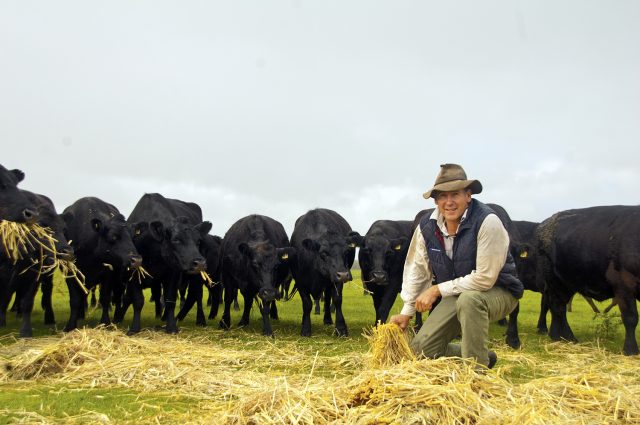The grass is slick with rain at David and Sara Roe’s 1930 hectare grazing property Benalong, west of Gingin, and their handsome black angus cattle look smug with contentment.
“It’s the best season we’ve had since 2005,” comments David, “with a solid start and regular rain events to date. We will still need a good spring to cap it off.”
Along with the higher-than-average rainfall this winter, cattle prices are on the rise with prime conditioned yearling steers reaching an average of 258c/kg and medium to heavy weight cows up to 206c/kg at Muchea last week – and it could get better.
Meat and Livestock Australia (MLA) stated in their mid-year summary released in July that: “Falling short of forecasting actual prices, analysis indicates that there is the ‘potential’ to improve by up to 40% on the average prices for the first half of 2014 – bringing Australian cattle prices back in line with its long-term global correlation.”
David Roe agrees. “There is certainly some long overdue optimism for beef producers after several years of returns at or below the cost of production, due to dryer seasons resulting in higher supplementary feed costs and poorer prices. This is being helped by increased demand from Asia and older US markets, and aided by the A$ returning to a more realistic value post the mining boom.”
The Roe family have certainly been in the grazing game long enough to know how to weather the industry fluctuations.
David’s father and brothers cleared the land at Benalong back in 1950 and the family have farmed there ever since.
Originally starting with a herd made up of poll Hereford, shorthorn and angus breeders, they now raise a pure-bred angus herd favouring the breed for their fertility, do-ability on grass, and good mothering traits.
Mating 640 angus cows and heifers each year, they also use artificial insemination (AI) through approximately 20% of the herd to maintain the right genetics. They turned to AI when the price of pure-bred bulls became prohibitive. “It’s the most cost-effective way for us to get the genetics we want,” says David.
A self-confessed spreadsheet addict, David collects and analyses data from his farm each year to keep an eye on profitability. He says that crunching the numbers helps him maximise his output of kilos per hectare.
However, flexibility and diversity are also integral in maintaining a successful farming enterprise. The Benalong Grazing Company runs a flock of 1200 border merino cross ewes and 500 white dorpers ewes which David admits are more work for the dollar, but they’ve proven useful in recent years when cattle prices have gone low.
However, with the MLA confident that it’s a matter of when, not if, Australian cattle prices significantly increase, beef producers may have finally hit the good run they needed to keep them firmly in the black. Let’s hope it sees traditional family farming enterprises like the Roe’s still going strong in the next 60 years.








